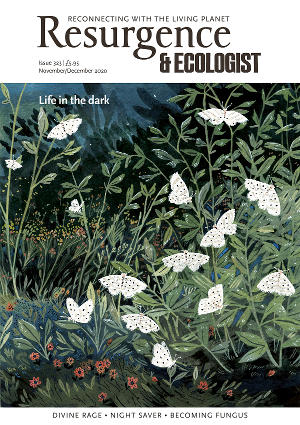Rubika Shah’s documentary White Riot opens with archive footage of clashes between police and black and minority ethnic people on the streets of 1970s Britain, sound-tracked by The Clash’s ‘London Calling’. The scenes clearly set the backdrop for her story – a nation divided by high unemployment and the rise of the National Front, its supporters egged on by the right-wing press.
Over the next 80 minutes, the film charts the Rock Against Racism (RAR) movement, formed in 1976 after a racist outburst by blues and rock guitarist Eric Clapton at a gig in which he encouraged fans to vote for Tory MP Enoch Powell and declared that Britain must stop itself from becoming a “black colony”.
Though Clapton has apologised in the years since, the tirade was the spark that led Red Saunders, a performer and music photographer, to found RAR. He was joined by a small group of mainly white, left-wing anti-racist campaigners, including an office manager, a photographer and a graphic designer.
RAR had its own fanzine, Temporary Hoarding, and in the absence of social media and the internet used posters and tireless letter writing, replying to “sackfuls” of mail from like-minded people to recruit supporters from all over the country, turning the organisation into a huge movement. As the National Front recruited children outside schools, RAR helped its members to set up multicultural punk and reggae gigs to act as rallying points for the resistance.
White Riot blends fresh interviews with the leaders of RAR and musicians who supported it with archive footage and montages of newspaper headlines of the day. Revelations of the extent of racism in the TV of the day and support for the National Front among the ranks of the police make uncomfortable viewing.
The film concludes with a huge antifascist carnival in Victoria Park in 1978, featuring X-Ray Spex, Steel Pulse, and The Clash giving a raucous rendition of ‘White Riot’ – a song that had been hijacked by white supremacists who “clearly hadn’t read the lyrics”, band member Topper Headon observed wryly, referring to the song’s real meaning as a rallying call to white people to protest against racism.
Saunders describes RAR’s aim as “peeling away the Union Jack to reveal the swastika”. The film discusses “all-round family British racism” and “the idea that we are still living, consciously or unconsciously, with the legend of colonialism” – a point that brings the debate right up to the minute, with the recent Black Lives Matter protests. The film has potentially missed a trick here by ending abruptly in 1979 – some comment from RAR’s founders on the intervening years could have been very insightful.
The parallels with recent British history are striking, including the rise of far-right populism and social unrest. Saunders concludes the film with his reflection that “One of the wonderful things about RAR was it was just ordinary people thinking, ‘We can do this, we can change the world.’” As the climate emergency and Covid-19 continue to expose continuing inequality around the world, let’s hope that today’s protest movements can follow suit.






